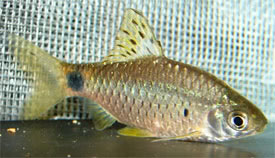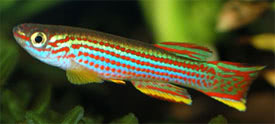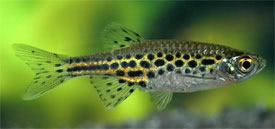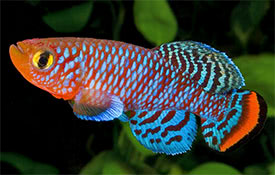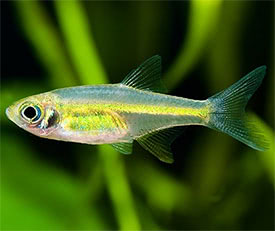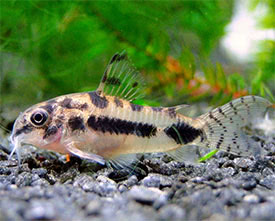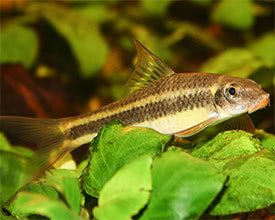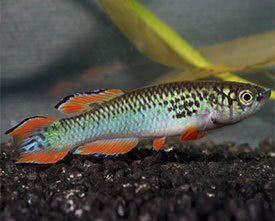Homaloptera orthogoniata - Saddle-back Loach
 Magyarul / Hungarian
Magyarul / Hungarian

 Magyarul / Hungarian
Magyarul / Hungarian

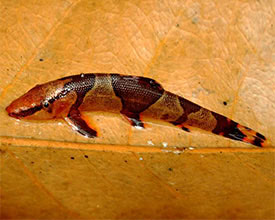

- Scientific name: Homaloptera orthogoniata
- Synonyms: -
- Common name: Saddle-back Loach
- Group: Loaches
- Distribution: Southeast Asia; Indonesia, Borneo
- Size: 10-13 cm
- Biotope: Found in fast-flowing forest streams with rocky bottom, where the water is soft, slightly acid and oxygen-saturated.
- Social behavior: A peaceful loach that like company, so they should be kept in a small group of at least 6 species.
- Diet: Omnivorous; in nature they feeding on biofilm that can be found on underwater surfaces, small crustaceans, and insect larvae, while in the aquarium they prefer live and frozen foods, but will accept sinking dried foods and algae too.
- Breeding: It has not been bred in aquarium.
- Tank: Minimum 110 litres
- Population: 5-6 fish for 200 litres
- Decoration: They like smooth pebbles and boulders and fast water-flow. Use sand or small gravel as substrate. In their natural habitat, they live in oxygen-saturated water, so they require good aeration. Use plants that tolerate high-flow environments, such as Anubias or Microsorum. Lighting should be bright to encourage algae growth in the aquarium.
- Temperature: 20-26 °C
- pH: 6.0-7.5
- Hardness: 1.0-10.0 dGH
- Lifespan: 5-8 years
Description: They have a light brown body with three distinct dark brown bands across their backs (saddle), where they get their common name. A dark line runs from the mouth, through the eye towards the back of the fish, and another dark line runs from the eye to the lower gill plate. H. orthogoniata can be told apart from all congeners by the following unique combination of characters: dorsal surface of body always with 3 large, saddle-shaped markings, the first posterior to the head, second covering the base of the dorsal-fin, and third between the dorsal-fin and caudal-fin which usually continuous laterally to origin of anal-fin. The base of the caudal-fin is dark brown. They have an incredibly sensitive sense of smell that detects food in the tank and they go frenzy when find the food. Saddle-back Loach do not like the high water temperatures. Because of its special needs, Homaloptera orthogoniata is not a good choise for a community tank, rather a biotope aquarium should be arranged for the fish with species inhabiting similar environments (Danios, Hillstream loaches).
Mature females have fuller body, and are a little larger than males.
Not much is known about their breeding habits, and it has not been bred in aquarium.
Sources:
http://www.fishbase.org/summary/22877
http://www.seriouslyfish.com/species/homaloptera-orthogoniata/
http://www.loaches.com/species-index/homaloptera-orthogoniata
http://www.fishbase.org/summary/22877
http://www.seriouslyfish.com/species/homaloptera-orthogoniata/
http://www.loaches.com/species-index/homaloptera-orthogoniata
Hasonló vízparamétereket igénylő fajok







































